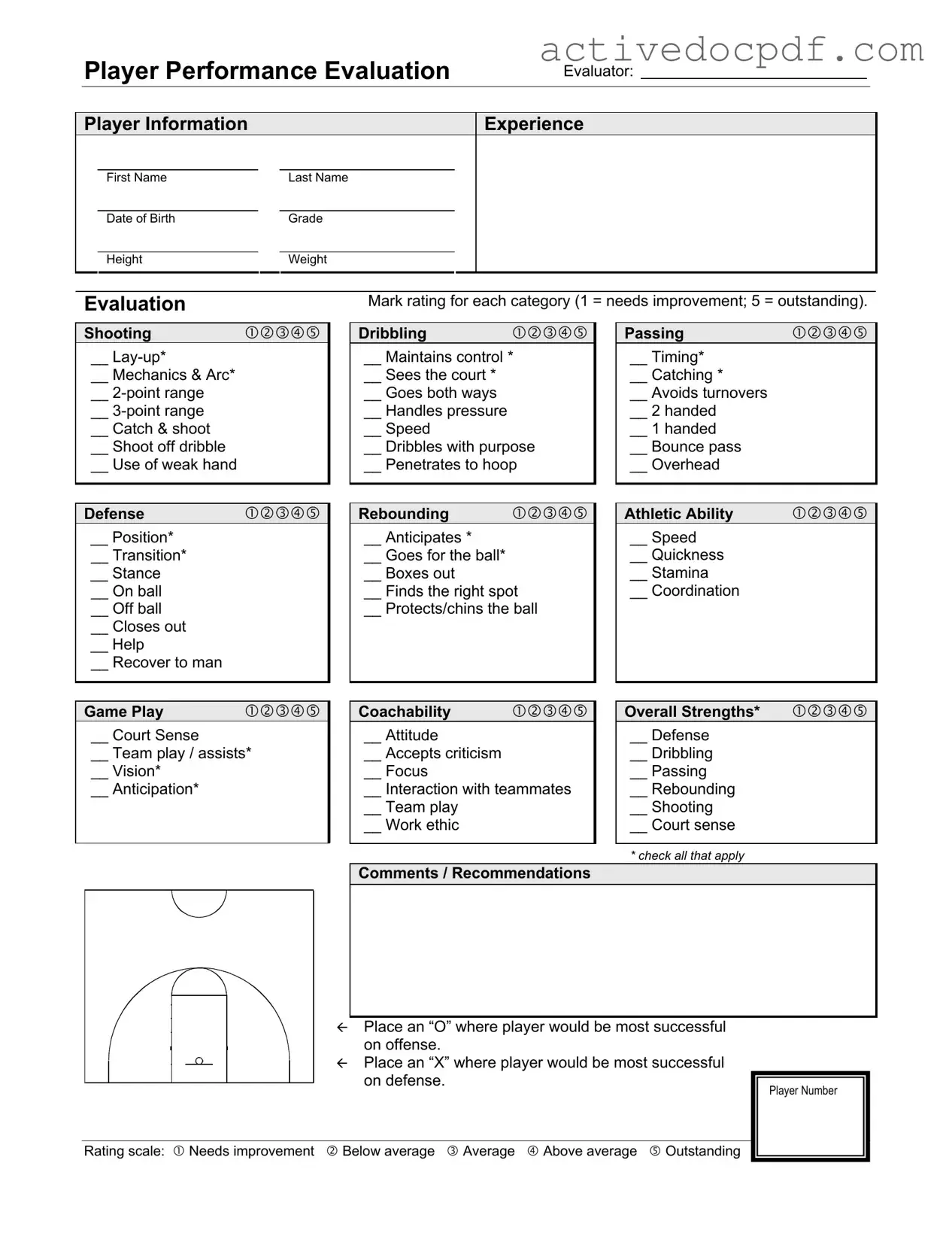The Basketball Evaluation Form serves as a comprehensive tool to assess a player's skills and performance in various aspects of the game. Coaches and evaluators use it to rate players on multiple categories, such as shooting, defense, dribbling, and passing. This evaluation helps identify strengths and areas for improvement, guiding training and development plans. Ultimately, it aims to provide a clear picture of a player's abilities, which can be beneficial for team placements and individual growth.
How should I fill out the evaluation ratings?
When filling out the evaluation ratings, you will use a scale from 1 to 5, where 1 indicates "needs improvement" and 5 signifies "outstanding." For each category, consider the player's performance based on the following:
-
1 (Needs Improvement):
The player struggles significantly in this area.
-
2 (Below Average):
The player shows some ability but lacks consistency.
-
3 (Average):
The player meets the basic expectations for this skill.
-
4 (Above Average):
The player demonstrates strong skills and performs well.
-
5 (Outstanding):
The player excels and stands out in this area.
Be honest and objective in your assessment to ensure the evaluation is helpful for the player’s development.
The comments section is an opportunity to provide specific feedback and recommendations for the player. Consider including:
-
Observations about the player’s strengths and weaknesses.
-
Suggestions for improvement in particular skills.
-
Notes on the player’s attitude, work ethic, and coachability.
-
Any relevant context, such as the player’s experience level or recent performance trends.
This personalized feedback can be invaluable for both the player and their coaches, as it offers guidance on how to enhance their game.
How can the evaluation help with team placements?
The evaluation provides a structured way to assess a player's skills, making it easier for coaches to make informed decisions regarding team placements. By reviewing the ratings and comments, coaches can:
-
Identify players who excel in specific areas, such as shooting or defense.
-
Determine which players complement each other’s skills, fostering effective team dynamics.
-
Ensure that each player is placed in a position that maximizes their strengths.
-
Track player development over time, adjusting placements as skills improve.
Ultimately, this evaluation helps create balanced and competitive teams, enhancing the overall experience for players.
